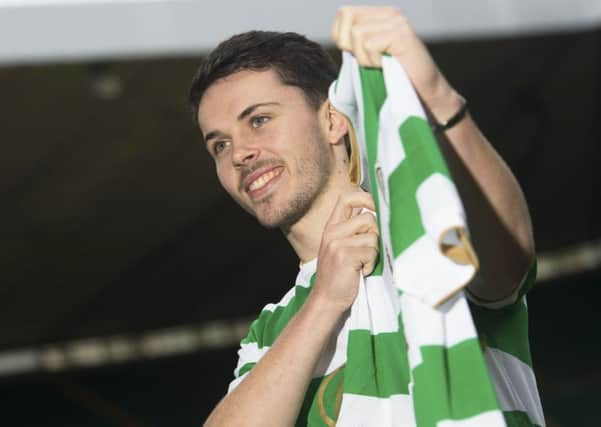Celtic's Lewis Morgan on how he became two-footed as a kid


Yet when the moment arrives for the winger to put his best foot forward at Celtic come the summer, the fact he could hesitate over thrusting out either left or right ought to make the 21-year-old an inspiration to budding young players across the country.
The £300,000 deal agreed between St Mirren and the Scottish champions this week that will see Morgan remain at the promotion-chasing Championship leaders for the rest of this season has been earned by dedication that has been patiently ceaseless.
Advertisement
Hide AdAdvertisement
Hide AdA variety of figures in the game have commented that Morgan is so genuinely two-footed that it is impossible to discern his weaker foot. He will think nothing of taking corners and set-pieces with either. In the past decade and a half of Celtic performers, only Lubo Moravcik and Derek Riordan could be genuinely placed in this bracket. Both these mercurial performers appeared naturally gifted. For Morgan, honest toil was required to make him ambipedal.
“It wasn’t natural for me – it was something from a young age I wanted to do for myself to give myself the biggest chance to progress in the game,” he said. “When I was younger football was everything so I just spent hour upon hour every day working on my weaker side. The fact you now can’t tell has to be a big positive for me.
“The first club I joined as a kid was an academy called First Touch [in Greenock], and we didn’t really play games or anything, it was all based around training.
“And there would be certain sessions where you were only allowed to use your weak foot. They produced a really high number of players who went on to play at pro youth level. That was a big thing for me and I owe a lot to them as well.”
According to those who know the family, it wouldn’t be unusual for Morgan to spend entire evenings in his home with a softball kicking it around only with his weaker foot – to effectively eliminate the term.
“I’ve got to a stage now where they’re pretty much identical so I don’t really need to think about receiving the ball with a certain foot and it gives me the ability to go either side. It’s a big tool for me and something I base my game around. If someone asked what my stronger side was I’d say my left but there isn’t much difference. If I was hitting a penalty I’d hit it with my left, that’s the only way I can put it.”
Any attempt at Moravcik parallels, though, causes the normally-assured Morgan to blanche. “It’s a big name to live up to but I do take set pieces from both sides, depending on what kind of delivery St Mirren are looking for,” he said. “If I get called on to it here, I’d be the same.”
It could be perceived as a damning indictment of the man-hours Scottish players are willing to put into their profession that there are so few who have maximised their use of both limbs in the fashion of Morgan. Understandably, it is hardly a discussion topic to which the player could really latch on. “I suppose it’s down to the individual,” he said. “I maybe got it drilled in from a young age, from being at training and told to use my weaker side. Maybe that’s why I chose to do it. You’ll find all players can use both feet anyway, they’ll just favour one side.
Advertisement
Hide AdAdvertisement
Hide Ad“That’s fine but if push came to shove pretty much every footballer can go off either side. I think it just helps me mentally knowing I don’t need to think what I’m taking the ball with.”
Morgan’s drive to have his body in the best possible condition hasn’t always worked out for the best. He admitted this week that his slender frame was a factor in Rangers discarding him as a 16-year-old, following seven years in their youth system. A lengthy spell out injured a couple of years ago had him believing he had been provided with the opportunity to address this by beefing up… which ran contrary to the physiological requirements of the wispy winger, he discovered.
“I was going to the gym probably about three times a day which any sports scientist would tell you is absolute nonsense – and it was, to be fair,” he said. “But when you’re injured, you just want to improve. I thought it was the only thing I could do at that time.
“Since then I’ve slimmed down again but I remember coming back from injury about double the size before I was injured. I look back at pictures of it and think absolutely mental. It was something important to me at the time. It was probably one of the main factors I got put into the first team. They probably thought I could be trusted to handle myself and since then I’ve really kicked on. But I couldn’t move! It was certainly something that did help me, though. It still helps me now. I feel just as strong, albeit more mobile and athletic. For a winger to be explosive and to have endurance is usually important.” It would seem a given that using both feet is important too, even if it appears Morgan is all too rare in diligently recognising that.